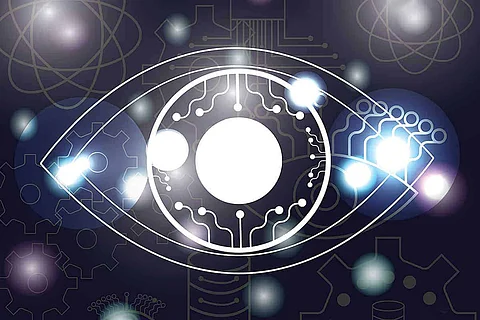

Deep learning in computer vision has made rapid progress over a short period of time. Some of the applications where deep learning is used in computer vision include face recognition systems, self-driving cars, security cameras, etc. The idea to infuse deep learning with computer vision has existed for a long period. Since the early days of Artificial Intelligence (AI), computer scientists have been working on creating machines that can see and understand the world as humans do. The strong efforts have led to the unravelling of computer vision, a vast subfield of AI and computer science that deals with processing the content of visual data. In recent years, computer vision has taken a leap to advances of deep learning. Computer vision refers to the entire process of emulating human vision in a non-biological apparatus. The technology has played a major role in providing futuristic vision in sci-fi movies. Deep learning is a branch of AI that is especially good at processing unstructured data such as images and videos. As deep learning exhibits advantages in the feature extraction, it has been widely used in the field of computer vision and is gradually replacing machine learning algorithms. Analytics Insight brings you a list of applications of deep learning for computer vision.
Image classification is the process of predicting a specific class or label for something that is defined as a set of data points. It is a subset of classification problems where an entire image is assigned a label. There are countless categories or classes in which a specific image can be classified. Consider a manual process where images are compared and similar ones are grouped according to like-characteristics, but without necessarily knowing in advance what you are looking for. The deep learning architecture for image classification generally includes convolutional layers, making it a convolutional neural network (CNN). Several hyperparameters, such that the number of convolutional layers and the activation function for each layer will have to be set. This is a non-trivial part of the process that is outside of the scope of this discussion. However, as a starting point, one can usually select these values based on existing research. The classification process is turning easy with deep learning providing insights to computer vision.
Facial recognition became a common name recently. Earlier, it was an expensive technology limited to police research labs. However, the recent technology developments in computer vision algorithms have made facial recognition find its way into various computing devices. The common matrix behind face unlock in the mobile phone is face recognition. An authentication system uses an on-device neural network to unlock the phone when it sees its owner's face and works decently under different lighting conditions, facial hair, haircuts, hats, and glasses. In China, many stores are using facial recognition technology to provide a smoother payment experience to customers instead of using credit cards or mobile payment apps. However, despite advances, current facial recognition is not perfect. AI and security researchers have found numerous ways to cause facial recognition systems to make mistakes.
Deep learning in computer vision is of big help to the industrial sector, especially in logistics. Scanners have long been used to track stock and deliveries and optimise shelf space in stores. When deep learning is applied, a camera can not only read a bar code, but also detects if there is any type of label or code in the object. The camera reads it and classifies the object based on the information associated with the label. For example, the Dynam.AI team using deep learning provided a solution for their professional club fitters that could identify the type of club and then identify the exact model of clubhead and shaft that a customer is using.
Join our WhatsApp Channel to get the latest news, exclusives and videos on WhatsApp
_____________
Disclaimer: Analytics Insight does not provide financial advice or guidance on cryptocurrencies and stocks. Also note that the cryptocurrencies mentioned/listed on the website could potentially be scams, i.e. designed to induce you to invest financial resources that may be lost forever and not be recoverable once investments are made. This article is provided for informational purposes and does not constitute investment advice. You are responsible for conducting your own research (DYOR) before making any investments. Read more about the financial risks involved here.
